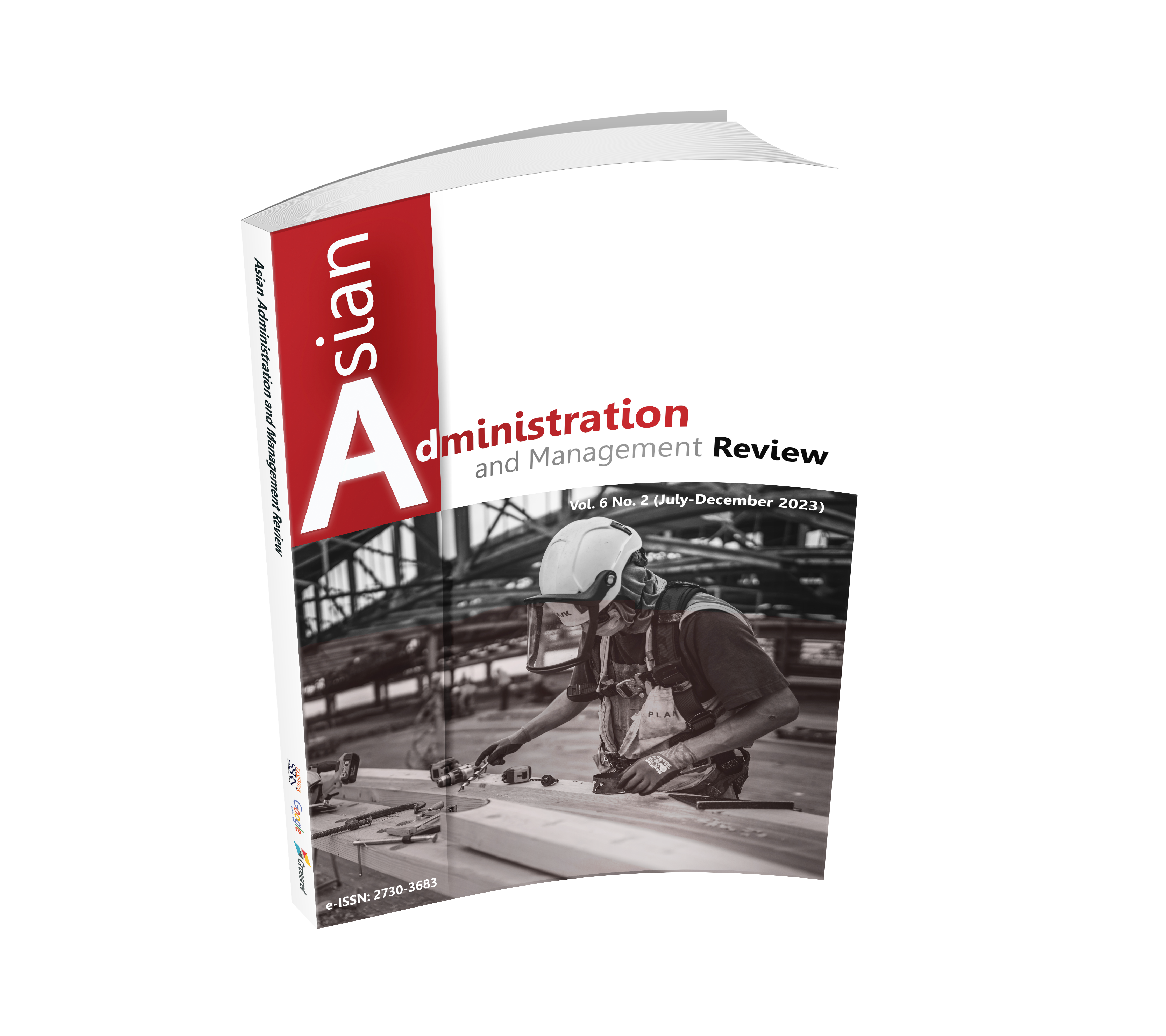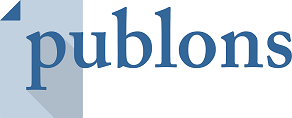A MODEL OF ENHANCING INNOVATIVE WORK BEHAVIOR OF AIRPORTS OF THAILAND
DOI:
https://doi.org/10.14456/aamr.2023.14Keywords:
Innovative Work Behavior, Work Engagement, Airports of ThailandAbstract
Tourism and aviation changes that may occur in the future, the organization will adapt to external challenges to ensure that the company will survive. The organizational management of AOT is ready to accommodate any situation stemming from a highly dynamic environment. The objectives of this research were to study the influence of job well-being, transformational leadership, perceived organizational support, work engagement on innovative work behavior at Airports of Thailand staff. This research used the quantitative research method. The sample group was staff working at the Airports of Thailand: Suvarnabhumi International Airport, Don Mueang International Airport, Phuket International Airport, Chiang Mai International Airport, Hat Yai International Airport and Mae Fah Luang Chiang Rai International Airport for a total of 380 persons stratified random sampling was employed in this study. The data were collected with questionnaires and analyzed with a structural equation modeling. The results revealed that job well-being had the greatest overall effect on innovative work behavior, followed by work engagement, perceived organizational support and transformational leadership, respectively. The results of this research can be offer to Airports of Thailand to indicate policy and develop organizations and operate in an efficient way that will be successful in the future.
Downloads
References
Afsar, B., Badir, Y., & Kiani, U. (2016). Linking spiritual leadership and employee pro-environmental behavior: The influence of workplace spirituality, intrinsic motivation, and environmental passion. Journal of Environmental Psychology, 45, 79-88.
Airports of Thailand. (2022). Fulfilling Quality of Life. Retrieved from https://corporate.airportthai.co.th/en/hr/.
Akhigbe, E., & Osita-Ejikeme, U. (2021). Corporate culture and employee engagement of insurance firms in Rivers State, Nigeria. Research Journal of Management Practice, 1(8), 60-71.
Akutsu, S., Krishnan, R., & Lee, J. (2022). The Cultural Variance Model of Organizational Shame and its Implications on Health and Well-Being. Japanese Psychological Research, 64(2), 244-266.
Amabile, T., & Pratt, M. (2016). The dynamic componential model of creativity and innovation in organizations: Making progress, making meaning. Research in Organizational Behavior, 36, 157-183.
Bakker, A., & Bal, M. (2010). Weekly work engagement and performance: a study among starting teachers. Journal of Occupational and Organizational Psychology, 83(1), 189-206.
Bakker, A., & Demerouti, E. (2008). Towards a model of work engagement. Career Development International, 13(3), 209-223.
Bass, B., & Avolio, B. (1993). Transformational Leadership and Organizational Culture. Public Administration Quarterly, 17(1), 112-121.
Breidenthal, A., Liu, D., Bai, Y., & Mao, Y. (2020). The dark side of creativity: Coworker envy and ostracism as a response to employee creativity. Organizational Behavior and Human Decision Processes, 161, 242-254.
Burns, J. (1978). Leadership. New York: Harper & Row.
Chang, H., Hsu, H., Liou, J., & Tsai, C. (2013). Psychological contracts and innovative behavior: A moderated path analysis of work engagement and job resources. Journal of Applied Social Psychology, 43(10), 2120-2135.
Christian, M., Garza, A., & Slaughter, J. (2011). Work engagement: A quantitative review and test of its relations with task and contextual performance. Personnel Psychology, 64(1), 89-136.
Colakoglu, U., Culha, O., & Atay, H. (2010). The Effects of Perceived Organisational Support on Employees' Affective Outcomes: Evidence from the Hotel Industry. Tourism and Hospitality Management, 16(2), 125-150.
De Jong, J., & Den Hartog, D. (2010). Measuring Innovative Work Behaviour. Creativity and Innovation Management, 19(1), 23-36.
Diamantopoulos, A., & Siguaw, J. (2000). Introducing LISREL: A Guide for the Uninitiated. London: Sage Publications.
Duan, J., Wang, X., Brinsfield, C., & Liu, S. (2020). How Enhancing Employee Well-Being Can Encourage Voice Behavior: A Desire Fulfillment Perspective. Human Performance, 33(5), 425-446.
Dvir, T., Eden, D., Avolio, B., & Shamir, B. (2002). Impact of Transformational Leadership on Follower Development and Performance: A Field Experiment. The Academy of Management Journal, 45(4), 735-744.
Elliott, K., & Asghar, A. (2014). Transformational Leadership in Science Education. In I. Saleh & M. Khine. (eds.). Reframing Transformational Leadership (pp. 99-115). South Holland: SensePublishers.
Gerhardt, C., Semmer, N., Sauter, S., Walker, A., de Wijn, N., Kälin, W., Kottwitz, M., Kersten, B., Ulrich, B., & Elfering, A. (2021). How are social stressors at work related to well-being and health? A systematic review and meta-analysis. BMC Public Health, 21, 890.
Ghasabeh, M., Soosay, C., & Reaiche, C. (2015). The emerging role of transformational leadership. The Journal of Developing Areas, 49(6), 459-467.
Gregory, B., Albritton, M., & Osmonbekov, T. (2010). The Mediating Role of Psychological Empowerment on the Relationships between P-O Fit, Job Satisfaction, and In-role Performance. Journal of Business and Psychology, 25, 639-647.
Halbesleben, J., & Wheeler, A. (2015). To Invest or Not? The Role of Coworker Support and Trust in Daily Reciprocal Gain Spirals of Helping Behavior. Journal of Management, 41(6), 1628-1650.
Janssen, O. (2004). How fairness perceptions make innovative behavior more or less stressful. Journal of Organizational Behavior, 25(2), 201-215.
Johnson, K., Schultz, A., Betensky, R., et al. (2016). Tau positron emission tomographic imaging in aging and early Alzheimer disease. Ann Neurol, 79(1), 110-119.
Kollamparambil, U. (2020). Happiness, Happiness Inequality and Income Dynamics in South Africa. Journal of Happiness Studies, 21, 201-222.
Kurtessis, J., Eisenberger, R., Ford, M., Buffardi, L., Stewart, K., & Adis, C. (2017). Perceived organizational support: A meta-analytic evaluation of organizational support theory. Journal of Management, 43(6), 1854-1884.
Kwon, K., & Kim, T. (2020). An integrative literature review of employee engagement and innovative behavior: Revisiting the JD-R model. Human Resource Management Review, 30(2), 100704.
Martins, E., & Terblanche, F. (2003). Building Organizational Culture that Stimulates Creativity and Innovation. European Journal of Innovation Management, 6(1), 64-67.
Maslach, C., Schaufeli, W., & Leiter, M. (2001). Job Burnout. Annual Review of Psychology, 52, 397-422.
Nazir, S., Shafi, A., Atif, M., Qun, W., & Abdullah, S. (2019). How organization justice and perceived organizational support facilitate employees’ innovative behavior at work. Employee Relations, 41(6), 1288-1311.
Neves, P., & Cunha, M. (2018). Exploring a model of workplace ostracism: The value of coworker humor. International Journal of Stress Management, 25(4), 330-347.
Park, Y., Song, J., Yoon, S., & Kim, J. (2014). Learning organization and innovative behavior: The mediating effect of work engagement. European Journal of Training and Development, 38(1/2), 75-94.
Pearce, C., & Ensley, M. (2004). A reciprocal and longitudinal investigation of the innovation process: The central role of shared vision in product and process innovation teams (PPITs). Journal of Organizational Behavior, 25(2), 259-278.
Phung, V., & Hawryszkiewycz, I. (2019). Knowledge Sharing and Innovative Work Behavior: An Extension of Social Cognitive Theory. In R. Lenart-Gansiniek. (ed.). Crowdsourcing and Knowledge Management in Contemporary Business Environments (pp. 71-102). Pennsylvania: IGI Global.
Pieterse, A., Van Knippenberg, D., Schippers, M., & Stam, D. (2010). Transformational and transactional leadership and innovative behavior: The moderating role of psychological empowerment. Journal of Organizational Behavior, 31(4), 609-623.
Rijnks, R., Koster, S., & McCann, P. (2019). The Neighbour’s Effect on well-Being: How Local Relative Income Differentials Affect Resident's Subjective Well-Being. Tijdschrift Voor Economische En Sociale Geografie, 110(5), 605-621.
Salanova, M., & Schaufeli, W. (2008). A cross-national study of work engagement as a mediator between job resources and proactive behaviour. The International Journal of Human Resource Management, 19(1), 116-131.
Salanova, M., Schaufeli, W., Xanthopoulou, D., & Bakker, A. (2010). The gain spiral of resources and work engagement: Sustaining a positive worklife. In A. Bakker & M. Leiter. (eds.). Work engagement: A handbook of essential theory and research (pp. 118-131). London: Psychology Press.
Schumacker, R., & Lomax, R. (2010). A Beginner’s Guide to Structural Equation Modeling. 3rd ed. New Jersey: Lawrence Erlbaum Associates.
Shen, Y., Jackson, T., Ding, C., Yuan, D., Zhao, L., Dou, Y., & Zhang, Q. (2014). Linking perceived organizational support with employee work outcomes in a Chinese context: Organizational identification as a mediator. European Management Journal, 32(3), 406-412.
Shuck, B., Adelson, J., & Reio Jr., T. (2017). The Employee Engagement Scale: Initial Evidence for Construct Validity and Implications for Theory and Practice. Human Resource Management, 56(6), 953-977.
Sijbom, R., Janssen, O., & Van Yperen, N. (2015). How to get radical creative ideas into a leader’s mind? Leader’s achievement goals and subordinates’ voice of creative ideas. European Journal of Work and Organizational Psychology, 24(2), 279-296.
Tipu, S., Ryan, J., & Fantazy, K. (2012). Transformational leadership in Pakistan: an examination of the relationship of transformational leadership to organizational culture and innovation propensity. Journal of Management & Organization, 18(4), 461-480.
Wen, J., Huang, S., & Hou, P. (2019). Emotional intelligence, emotional labor, perceived organizational support, and job satisfaction: a moderated mediation model. International Journal of Hospitality Management, 81(1), 120-130.
Whittington, J., Goodwin, V., & Murray, B. (2004). Transformational leadership, goal difficulty, and job design: Independent and interactive effects on employee outcomes. The Leadership Quarterly, 15(5), 593-606.
Yang, W., Johnson, S., & Niven, K. (2018). “That's not what I signed up for!” A longitudinal investigation of the impact of unmet expectation and age in the relation between career plateau and job attitudes. Journal of Vocational Behavior, 107, 71-85.

Downloads
Published
How to Cite
Issue
Section
License
Copyright (c) 2023 Authors

This work is licensed under a Creative Commons Attribution-NonCommercial-NoDerivatives 4.0 International License.











.png)


